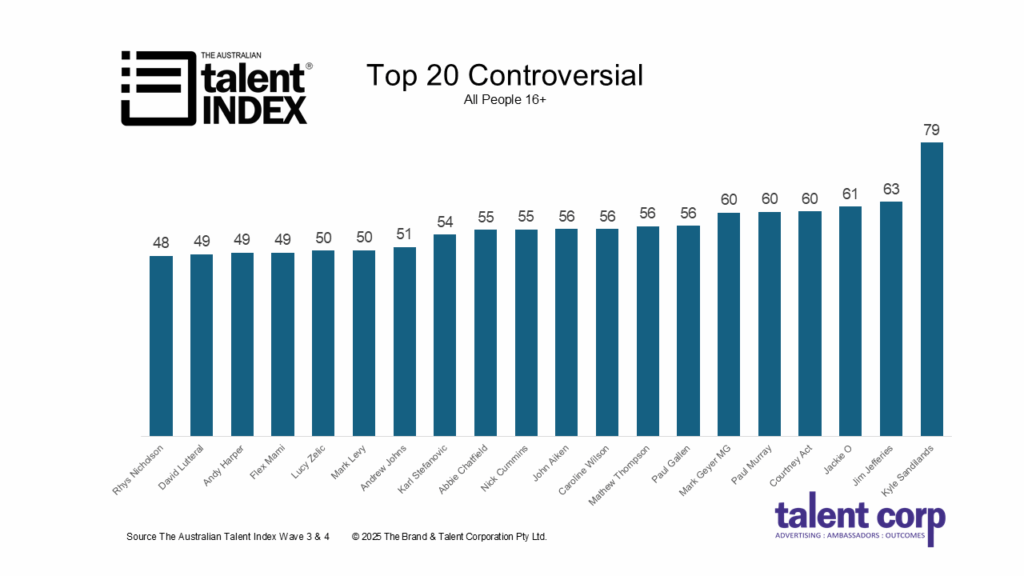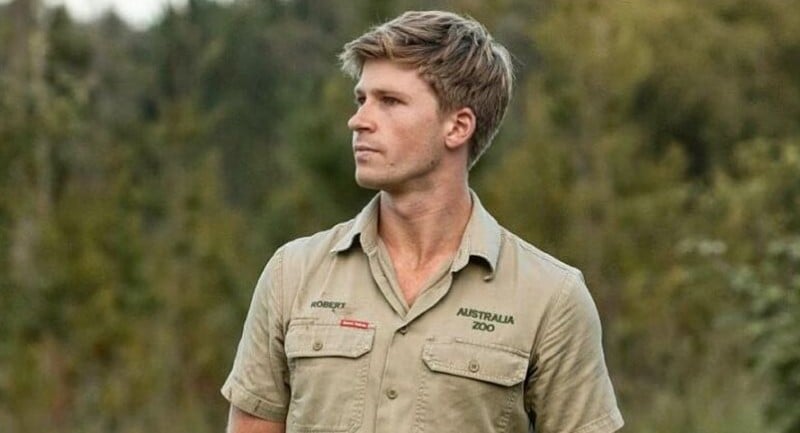Topping the list for the 2025 Australian Talent Index’s Top Talent Report is Robert Irwin. It is the second year in a row that host of Network 10’s I’m A Celebrity Get Me Out of Here! has topped the annual list, compiled by research firm Talent Corp.
“It always throws up interesting and somewhat unexpected talent. Last year, Robert Irwin was a surprise for me,” revealed Talent Corp Managing Director Mark Noakes in a conversation with Mediaweek. “We’ve created this index to measure both positive and negative sentiment. That’s clearly indicates that he doesn’t have a lot of negative sentiment. Rebecca Gibney coming up this year, that was interesting for me in an unexpected in a way. This is real consumer research.”
The goal of the Top Talent Report is to give marketers, media buyers, and brands a more nuanced tool for choosing talent that enhances campaigns without alienating audiences. The survey ranks media personalities using a scale from -100 to +100, factoring in both positive and negative consumer sentiment.
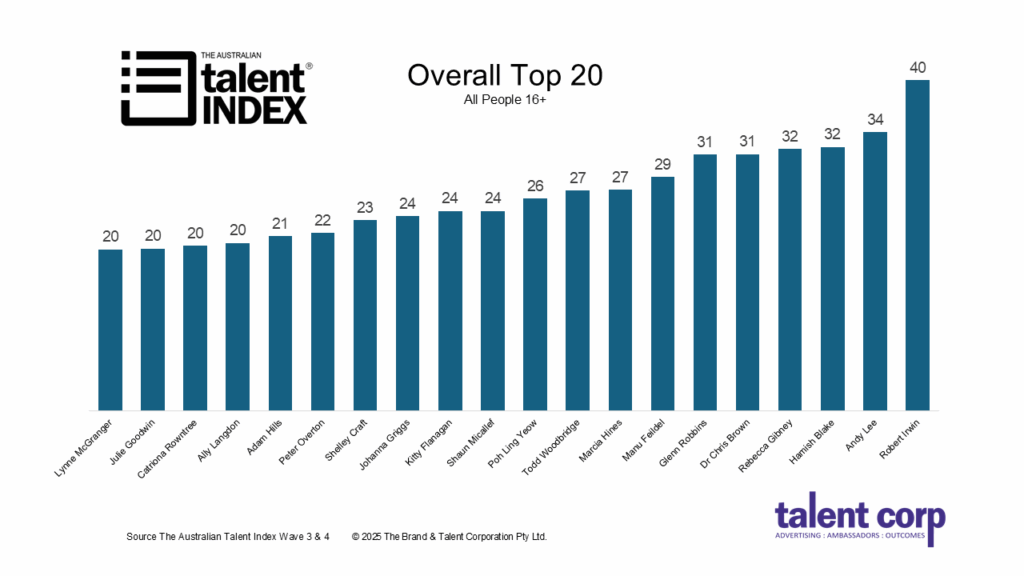
What is interesting about the report is that it highlights the gulf between the popularity of talent and the ratings their programs often generate. For example, registering high on the Top 20 are figures such as Amanda Keller and Glenn Robbins who score highly due to consistent likability, even if their current media programs aren’t topping ratings charts. The index also saw the aforementioned Rebecca Gibney and Shelley Craft receive strong sentiment scores, reflecting their enduring public goodwill.
Interestingly, while Shelley Craft made it into the Top 20, her The Block co-host Scott Cam didn’t.
“Scott Cam is surveyed, but in terms of the index, Shelley is rated higher than Scott,” Noakes said, but the index’s scale registering negative sentiment suggests that “Scott must have a bigger group that are not really big fans.”
Second on the list was Andy Lee, who has, for the first time, ranked ahead of long-time comedy partner, Hamish Blake.
The results serve as a reminder that a celebrity’s popularity doesn’t always translate to broad appeal. The index aims to guide brands in avoiding reputational risk by helping them avoid talent with high awareness but polarising sentiment.
While the current report focuses on broadcast media figures, future versions will expand to include influencers, sportspeople, and actors. Custom segmentation is also available by age, location, and psychographics, allowing brands to target specific demographics or sentiment drivers such as credibility, relatability, and entertainment value.
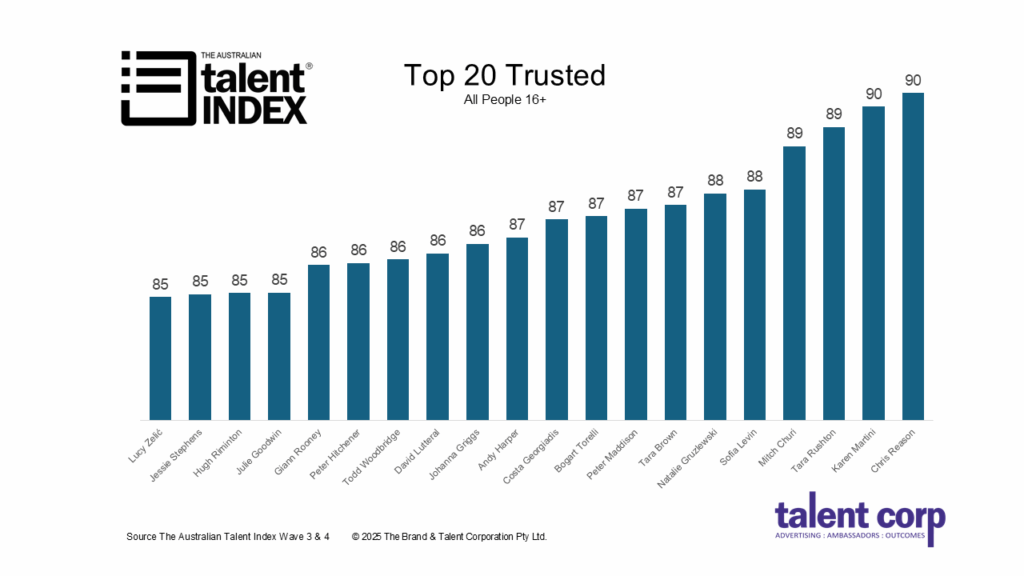
The survey extends beyond just the Top 20, also measures qualities in talent like trust, controversy, and likability, while also breaking talent up into categories based on their genres. For example, you can see the popularity of celebrity chefs and food critics.
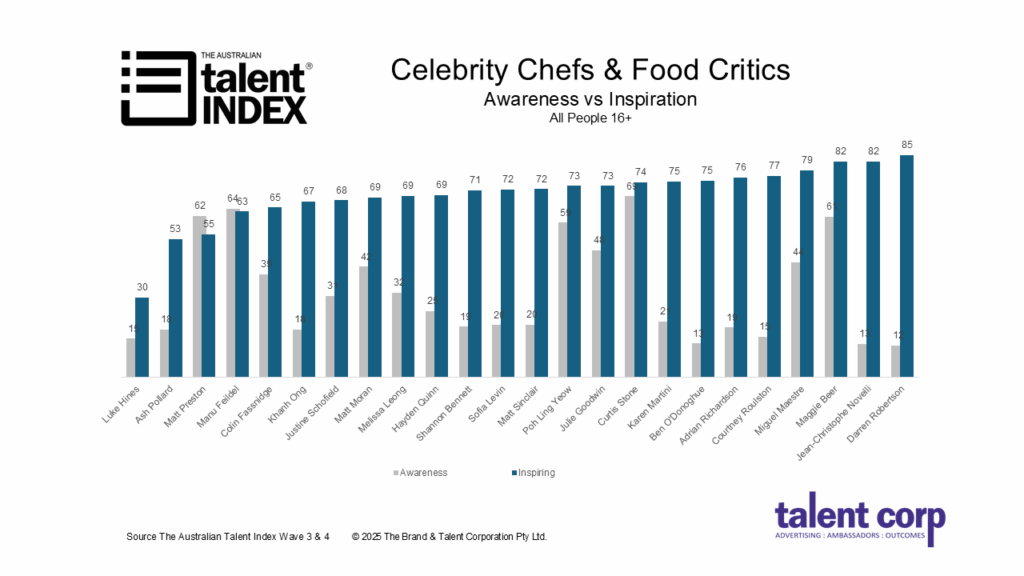
It isn’t just whether a celebrity is likeable or not that is being recorded, but also the awareness of talent. An interesting category to look at is Breakfast hosts, if only for Australia’s most polarising figure Kyle Sandilands. Today host Karl Stefanovic slightly beats him out in terms of awareness – the national profile of his show likely aids with that. Sandilands is right behind Stefanovic in awareness, but is considerably lower in terms of trust. Co-host Jackie O is right behind Sandilands in terms of awareness, but has a level of trust that is significantly higher and comparable to her own awareness.
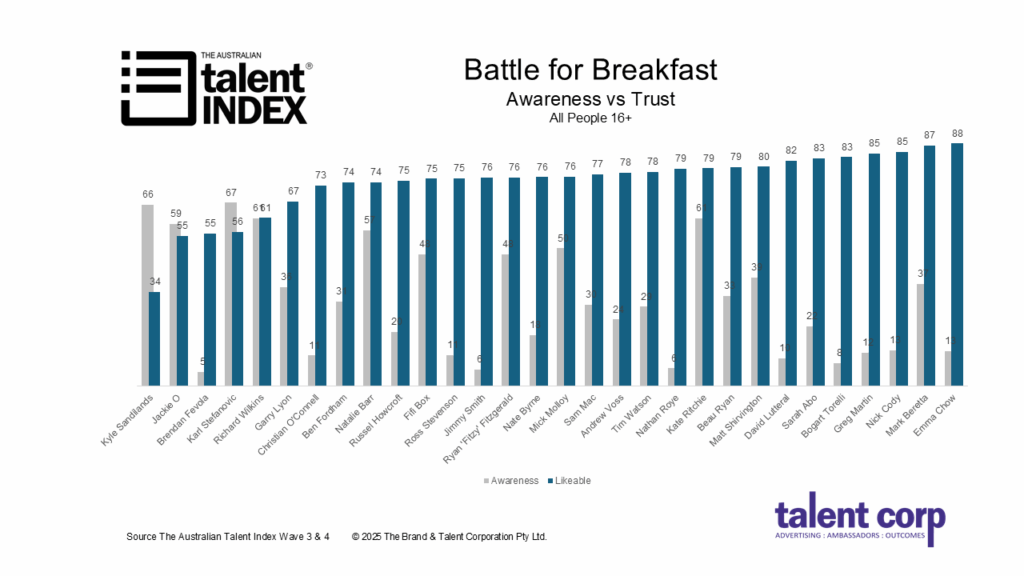
The Breakfast analysis is also a good example to talk about where the value of a report like this comes into play for those looking for their next spokesperson.
“The listeners of Kyle Sandilands love Kyle Sandilands,” Noakes said. “But there’s a big cohort outside of those listeners that hate him. Our index takes in that negative sentiment and combines it with the positive sentiment to get the ranking. And if you’re a marketer and you don’t want to disenfranchise a certain cohort, then that’s the Talent Index comes into play. Just a likability or a rating is not really a great measurement for a celebrity if you don’t want to disenfranchise a brand, a cohort, a demographic.”
While the current report focuses on broadcast media figures, future versions will expand to include influencers, sportspeople, and actors. Custom segmentation is also to those who pay to access the full report. This breaks down results into age, location, and psychographics, allowing brands to target specific demographics or sentiment drivers such as credibility, relatability, and entertainment value.
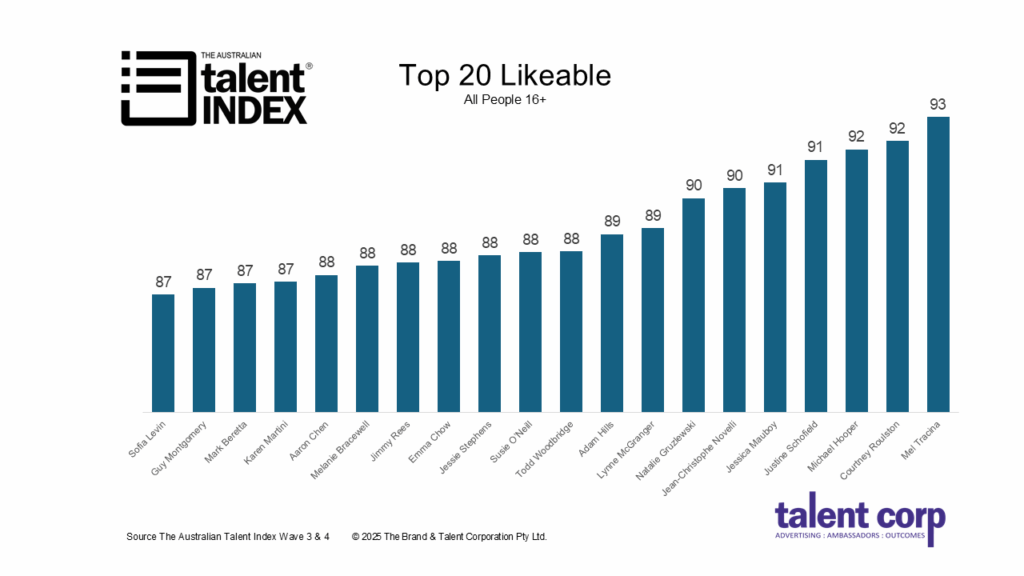
Currently the report only considers broadcast media talent, even with the rise of prominent influencers in the social space. The reason they are not captured in the current version of the report is due to resources and logistics.
“We started including some influencers,” Noakes revealed. “We did actors as well. And we got to a point where we realised we’re trying to do too much at once. The survey group is just too big. We intend to do a broadcast version, an influencer version, and a theatrical, you know, actor version.”
